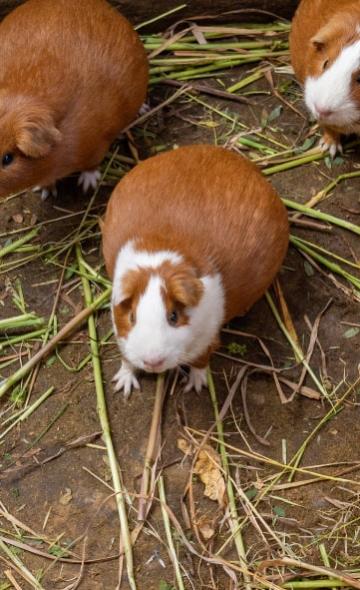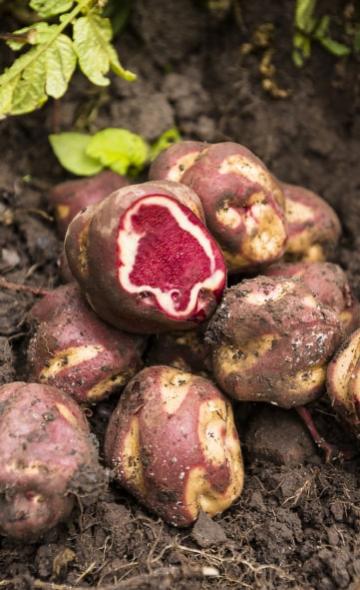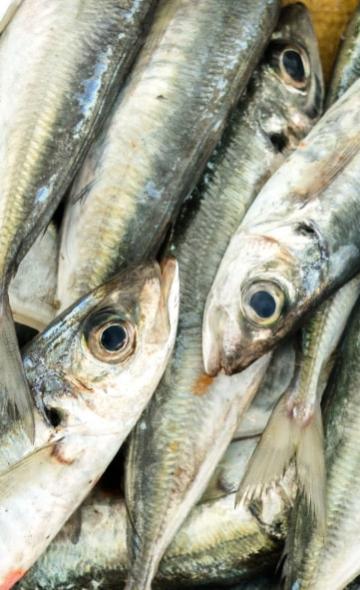- Visitors
- Researchers
- Students
- Community
- Information for the tourist
- Hours and fees
- How to get?
- Virtual tours
- Classic route
- Mystical route
- Specialized route
- Site museum
- Know the town
- Cultural Spaces
- Cao Museum
- Huaca Cao Viejo
- Huaca Prieta
- Huaca Cortada
- Ceremonial Well
- Walls
- Play at home
- Puzzle
- Trivia
- Memorize
- Crosswords
- Alphabet soup
- Crafts
- Pac-Man Moche
- Workshops and Inventory
- Micro-workshops
- Collections inventory
- News
- Students
- Guinea pigs in gastronomy: nutritional value, types and characteristics
News
CategoriesSelect the category you want to see:

What is an anaco, a garment found in the funerary bundle of the Lady of Cao and in the Lambayeque funerary bundles? ...

Inauguration of the 2025 Tourism Panel Discussions in Magdalena de Cao ...
To receive new news.
Por: Complejo arqueológico El Brujo
The guinea pig (Cavia porcellus) is an ancestral food with deep roots in the Andean culture. It is characterized by being healthy, easily digestible, low in sodium and with low cholesterol levels. Moreover, it provides vitamin B and essential fatty acids that favor neurological development.
Its adaptability to various preparations and its nutritional value have made it a fundamental component of Andean gastronomy. In this article, we explore its nutritional value, the types of guinea pig, their domestication, and some of their most prominent preparations.
Nutritional value of guinea pigs
The guinea pig is recognized for its high protein content and low level of fat, which makes it a healthy option within the Andean diet. Besides, it contains essential fatty acids, making it a healthy choice.
Another nutritional advantage of guinea pig is its low cholesterol content, which makes it ideal for people looking to reduce the consumption of saturated fats in their diet.
It is also rich in vitamins of the B complex, linoleic and linolenic fatty acids that are crucial for neurological development. It provides essential minerals such as iron, phosphorus, and zinc, which contribute to the strengthening of the immune system and bone health.
Types of guinea pig according to shape and fur
There are different types of guinea pig that, according to their physical characteristics, are classified, in this case, by the shape of their body and the type of fur. This division allows us to identify varieties that are differentiated by their appearance.
Classification according to body shape
1. Rounded body: This type of guinea pig has a greater amount of flesh, so it is more valued in gastronomy.
2. Elongated body: It has a lower meat development compared to the rounded type.
Classification according to type of fur
1. English Guinea Pig: It is characterized by having a short and light-colored fur.
2. Abyssinian Guinea Pig: It has a short fur with rosettes and a wide variety of colors.
3. Woolly guinea pig: It has a long and straight coat, being used on some occasions as a pet.
4. Merino guinea pig: It has a short and bristly fur.
The guinea pig and its ancestral domestication
The domestication of the guinea pig is estimated to have begun approximately 10,000 years ago, when pre-Columbian cultures began to breed it as a constant source of food. In Andean societies, guinea pig was not only considered a source of protein, but also an important element in medicinal, divination, and sacrificial animal use.
Moreover, according to historical records, such as those of the chronicler Cobo, certain parts of the guinea pig were used to treat various ailments, from muscle injuries to ear infections. These uses are not simple stories of the past, since there are archaeological finds, such as those found at the site of Lo Demás, in the Chincha Valley, that support their importance in our culture.
Main preparations of guinea pig
1. Guinea pigs can be prepared in a variety of ways, depending on the region and local traditions. Some of the most popular ways to prepare it are the following:
2. Picante de cuy: This dish combines guinea pig meat, hot peppers and native potatoes in a special sauce.
3. Cuy chactado: This is one of the most emblematic preparations of Peru. It consists in frying the guinea pig whole, previously marinated with spices, until the skin becomes crispy. It is served with potatoes, corn and a hot sauce.
4. Fried guinea pig: Although it is often confused with cuy chactado, this dish stands out for its deep-fry technique, which achieves a golden and crispy skin.
5. Ajiaco de cuy: In Magdalena de Cao, guinea pig is prepared as ajiaco or stew. For ajiaco, it is macerated a day before in pepper, salt, garlic and vinegar, then parboiled and fried. The stew is seasoned with oregano, chicha de jora (germinated corn beer) and ají panca (Peruvian red pepper), and served with rice, potatoes and creole sliced onion sauce.
1.jpg)
The guinea pig: An Andean gastronomic legacy
Thanks to its sustainable breeding and its versatility in cuisine, the guinea pig has become an icon of Andean gastronomy, conquering both locals and foreign visitors.
This food combines an exceptional flavor with a deep cultural and nutritional value, representing a pillar of the Andean culinary tradition. Promoting its consumption and recognizing its importance is key to preserving and disseminating this legacy, ensuring that it continues to be an essential part of our gastronomic identity.
Students , outstanding news




